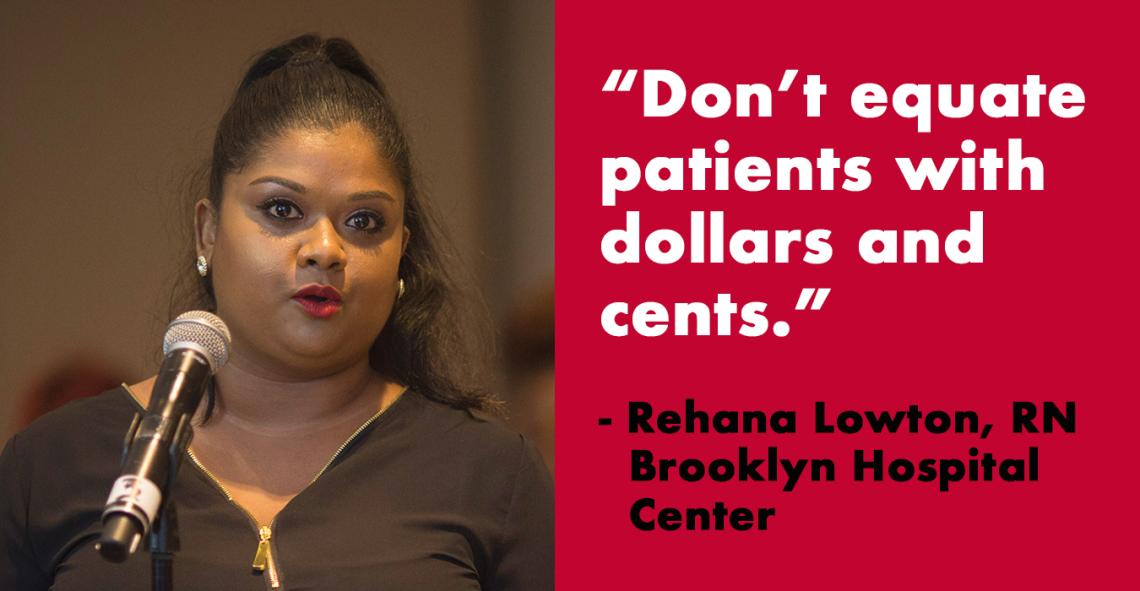Crisis in healthcare

It all starts on the units. That is where nurses see the results of our society’s conditions.
What exactly do they see? Higher acuities. Yes, Americans are showing up at New York hospitals and hospitals across the country sicker each year. In fact, longevity ticked down 0.1 percent for American males last year (one factor was white men with cardiovascular illness) for the first time in a generation.
This acuity crisis can be tied to many factors, but one is that large numbers of Americans with health insurance do not use their coverage because they simply cannot afford to do so. The Commonwealth Fund figures released annually show no fewer than 30 percent of insured Americans fail to seek medical treatment or fill their prescriptions when ill because, even with insurance, they are still unable to pay for it. Insurance premiums were up 15 percent in New York in 2017, and are expected to far outpace inflation in the coming decade.
Unaffordable Healthcare
Morality, human suffering and all notions of empathy aside: the sheer cost of this shortcoming to society is massive. People are getting very sick and losing days on the job or foregoing other productive tasks all because they cannot afford healthcare. And they return to the hospital over and over again because their illness persists.
For those receiving Medicaid, overcrowding at facilities is especially pronounced, as resources are declining.
The federal government is unrelenting in its efforts to cut funds that provide care to underserved communities. That same government has taken aim at eliminating protections for patients with pre-existing conditions in what would result in harsh punishment of the sickest. At every turn, federal authorities fail to heed the calls from nurses, other caregivers and public health advocates to support care for those most in need.
Imagine what devoting our nation’s annual healthcare expenditures of $3.3 trillion to real, comprehensive, universal healthcare for the people would do for Americans? Imagine a system devoted not to profits, but to patients.
In 2015, the five largest healthcare networks in the New York City metro area—excluding the public system—reported that 108 of their executives were paid over $1 million annually, with the average compensation being $2.2 million. Pay packages resemble Wall Street salaries, with bonus pay comprising a large part of total compensation.
The denial of care has now caught up with us, as millions go without care and become very, very sick. Nurses have seen it coming, have described it, decried it and have made this crisis in New York a very top priority.
From the bedside on their units, they can articulate the medical and social unraveling of our population.
There is no question that Americans in the multitudes are wondering: Why are we so sick? Why can’t we afford care? Nurses have the answers.